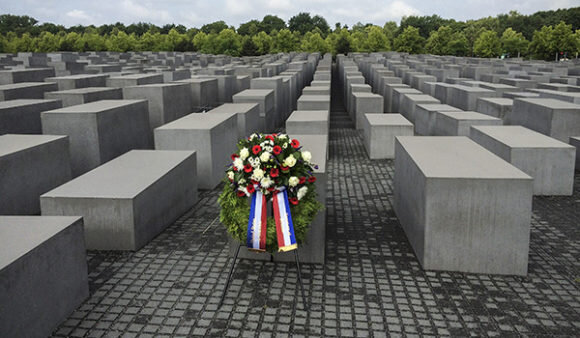by Shelby Clark, The Good Project researcher
In this moment of extreme polarization in much of our country, it is helpful to find ways to find common ground while also acknowledging and examining the differences amongst us.
To that end, I thought it would be instructive to explore the commonalities and contrasts between myself and a close family member-- by making use of two of the Good Project’s most common tasks, the Value Sort[1] and an ethical dilemma. Although we are both registered “independents,” we certainly would be classified on different ends of the political spectrum; indeed, I proudly voted for Hillary Clinton in 2016, while my more conservative family member (let’s call him Ray) cast his vote for Donald Trump. We have similarly disagreed on and off over the course of my life regarding several traditional American controversies (e.g. gun rights, the role of government, the level of taxes for the wealthy).
The Good Project Value Sort presents an individual with 30 different values such as fame/success, power, honesty and “the common good”, and asks the participant to first choose their top 10 values, from which they will narrow these choices down to their top four values. The participant is then asked to do the same regarding their top 10 lowest values, and then to choose their top four lowest values. So how did Ray and I score? Did we share similarities despite our political differences? Or, alternatively, are our values polarized due to our politics?
An outsider might have expected our results to be polar opposites given basic knowledge of our political lives, yet our Value Sort results help to shed light on the nuances of identity. Ray and I shared two of our top four values and also shared two of our bottom four values. For the top, we both ranked hard work and commitment as well as self-examination and self-understanding as two of our top four. For the bottom, we both ranked efficient work habits and fame/success as two of our choices. Our reasonings were also quite similar. For example, regarding putting efficiency in the bottom four, we both argued for the importance of going slow and deliberately regarding your work sometimes. As Ray noted, “It’s like Thomas Edison said, he didn’t discover electricity, he discovered 4,000 ways that it didn’t work. If he was efficient, he wouldn’t have taken all the time not to try those other 4,000, he would have just waited till he figured it out.” We also both thought self-examination and self-understanding is important in terms of remembering where one “comes from” and how that impacts one’s interaction with the world. Given my many interactions with Ray over the course of my life, it is perhaps not surprising that some of his life views have influenced me, political party notwithstanding.
We also found that we had differences, though. I ranked curiosity and social concerns and pursuing the common good as the other two top values of my top four-- perhaps not surprising for an academic who studied curiosity for her graduate studies and who works on encouraging character development in adolescents. Ray, on the other hand, ranked rewarding and supportive relationships and personal growth and learning-- also perhaps not surprising for a self-made and educated man who works in a relationships oriented industry. For the bottom values, I ranked faith and spirituality as my other bottom two values, whereas Ray ranked power/influence and solitude/contemplation.
We, at the Good Project, often pair our Value Sort task with our dilemma tasks as we’re interested to see how individuals’ values do or do not influence the ways in which people think about and interpret dilemmas. I asked Ray to think about our “Money Matters” dilemma, printed below, as I was interested to see whether or not we’d think about it differently.
Money Matters. Felicia is the twenty-eight-year-old founder of a national nonprofit organization that works with schools, families, and volunteers to help create safe schools and communities. Some years ago, Felicia needed to raise money quickly. She talked with a potential funder about doing a challenge grant: if Felicia could raise $20,000 from other sources, this funder would give her an additional $20,000. Felicia and her coworkers at the nonprofit sent in a proposal, and then raised $20,000 from other sources under the premise of the challenge grant. Then the funder who had offered the challenge grant called to say that she had “changed her mind.” Felicia was faced with an ethical decision: should she tell the other funders the challenge grant had been reneged on, or should she keep quiet and keep the money?
Ray looked at the dilemma before completing the Value Sort and says that completing the Value Sort did not change his decision-- he knew what he would advise Felicia right away, saying he encounters decisions like this all the time in his work. Ray notes that Felicia “absolutely has to tell [the other funders]” noting that she can “call and say this is what happened” and tell the funders that she made a “sincere effort and had the commitment” but that she had “no control and the person reneged.” Ray emphasized that Felicia should emphasize that she could “still do some decent work” with the money but that she has to give the funders “the option” to take back their money. When describing his reasoning, Ray noted that “in this day and age, it would get out [that Felicia kept the money]” and says that Felicia “could never raise money again...nobody would listen to her again...she’d be shooting herself in the foot.”
When asked if the amount of money made a difference-- say if it were a million dollars rather than $20,000, Ray didn’t change his mind, noting that Felicia should be prepared with data to argue why she could do good with the money, but that the funders should have the right to take back the their contributions. He noted, “I’d go to them each individually...go to them personally...say I’m here because the situation has drastically changed...be prepared with data, what I could do with a million dollars…. [but] they have a right to take it back, it’s up to them.”
For me, my answer was perhaps not as nuanced as Ray’s-- I simply said it was wrong for her not to tell the funders even if she could perhaps do good with the $20,000 that the funders could take back. I simply don’t wish to promote a world where more people are lying and dishonest with one another, as I ultimately don’t think that leads to a good society.
For both Ray and me, you can see how our top values are infused in our responses to the dilemmas. For Ray, one of his top values is rewarding and supportive relationships. Much of his response to Felicia’s dilemma is focused on how to maintain a trusting and supportive relationship between funders and fundee; indeed, he notes that without telling the funders Felicia will never be trusted again by future funders. He further notes that if he were Felicia he would go individually and personally to each and every funder to describe the situation to them, and, perhaps, further garner their support. Again, such actions could be a result of Ray’s focus on deliberately cultivating and maintaining supportive relationships in one’s life. Meanwhile, one of my top values is social concerns and pursuing the common good. This value might be seen in my very deontological and “duty bound” answer to this dilemma-- for me there is a right and wrong response to this dilemma, where the right answer is to be honest to your funders because I believe a poor society is one where everyone is dishonest and lies to one another. For me, Felicia can support the common good by modeling honesty for all.
Despite supporting different political agendas, Ray and I share many values and ultimately came to the same decision regarding the Money Matters dilemma. What might account, then, for our differences in political views? Perhaps, as psychologist Jonathan Haidt has argued in his moral foundations theory, conservatives and liberals may value similar things but may give different orders of preference to those values. Haidt’s research has found that American liberals tend to particularly value two of the five moral foundations (care and fairness) whereas American conservatives tend to value all five moral foundations (fairness, care, loyalty, sanctity, and authority). Thus, it may be that Ray and I both value hard work and commitment, but when it comes to choosing for our country, different patterns of values for each of us might prevail.
Perhaps more importantly-- Ray and I both left this conversation feeling like we had learned a little more about each other, what we value, and how we think about things, which is our main hope for these tools. How might you use these tools in your own life or classroom? Do you think there are some decisions in your life that your values impact more than others? Do some of your values impact some decisions and some impact other decisions? What pattern do you see?
[1] Originally designed by Jeanne Nakamura












